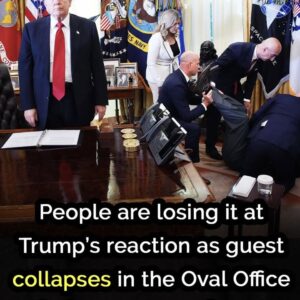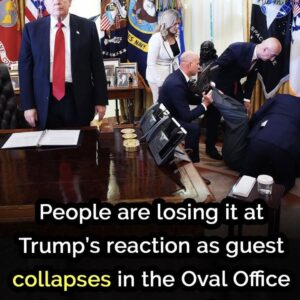Recently, a reaction from former President Donald Trump has sparked widespread discussion across social media, news outlets, and political circles. The incident, whether a speech, social media post, or facial expression during a public event, has captivated audiences and analysts alike.
While details vary, many see Trump’s response as uncharacteristic or revealing of deeper sentiments. Supporters view it as a sign of passion and conviction, emphasizing his steadfastness. Critics, however, interpret it as a sign of frustration or instability, highlighting potential vulnerabilities amid a polarized environment.
The reaction quickly went viral online, with clips and memes trending across platforms. Political commentators and psychologists have analyzed its possible meanings—some seeing it as authentic, others as strategic. Mainstream media headlines reflect mixed interpretations, debating whether it signals a shift in Trump’s mindset or strategy.
Such moments are often scrutinized because they reveal sides of leaders that shape public perception. In Trump’s case, his reactions influence campaign narratives, voter opinions, and media discourse. Polls show a divided response: some see his reaction as bold, others perceive it as volatile, mirroring America’s political polarization.
As experts evaluate this incident, it’s clear that Trump’s reactions remain central to his public image. How he manages these moments could impact his political future, either reinforcing support or fueling criticism. Ultimately, this event underscores how such reactions continue to shape American politics, influencing narratives and perceptions beyond the immediate moment…
…
STAY TUNED !





